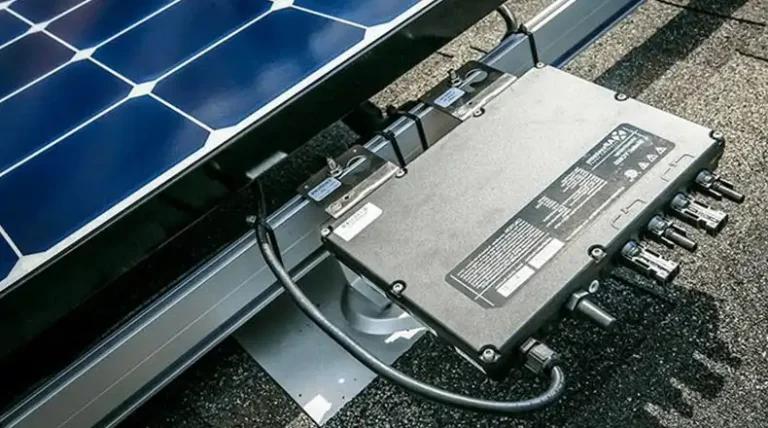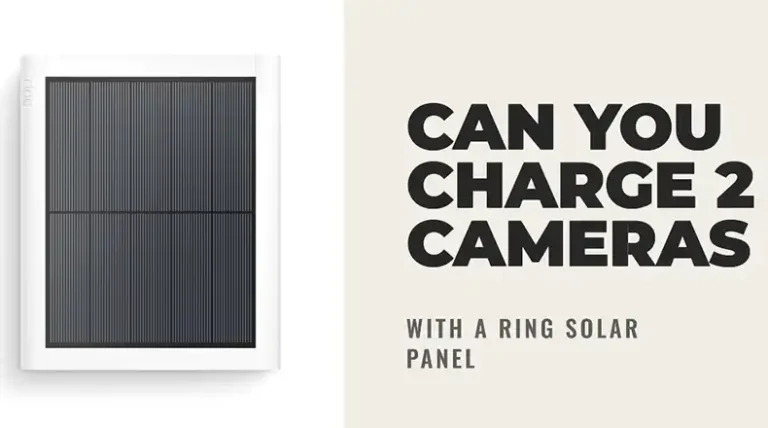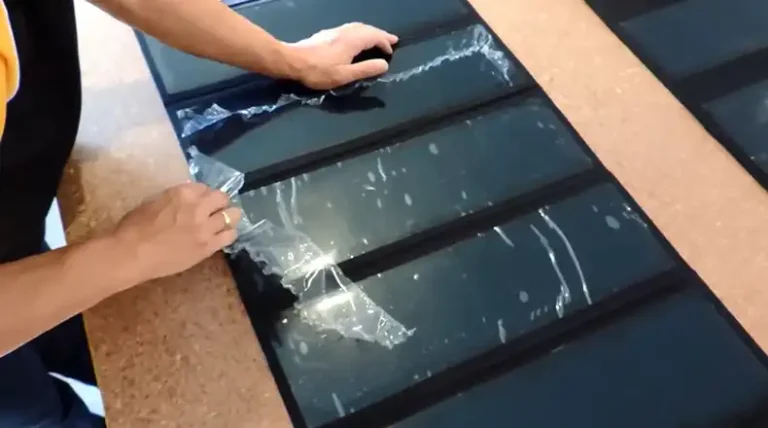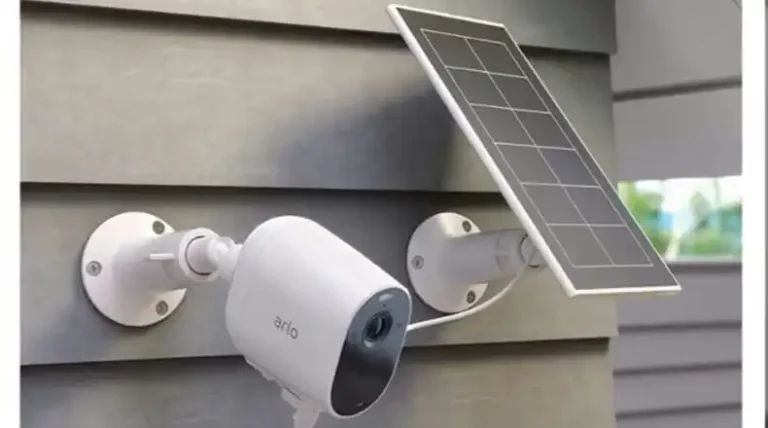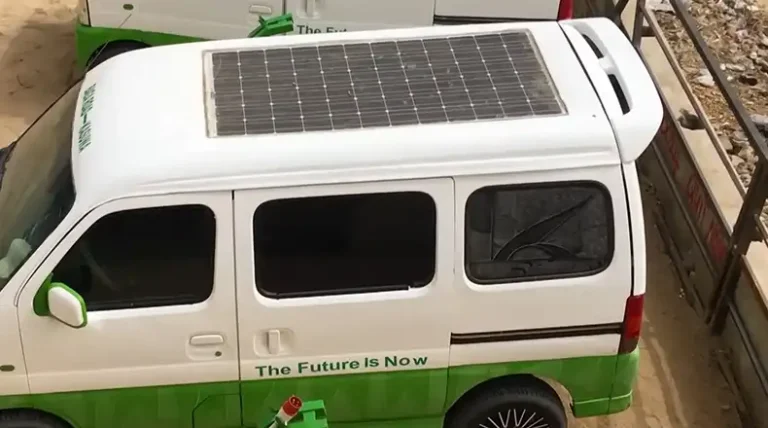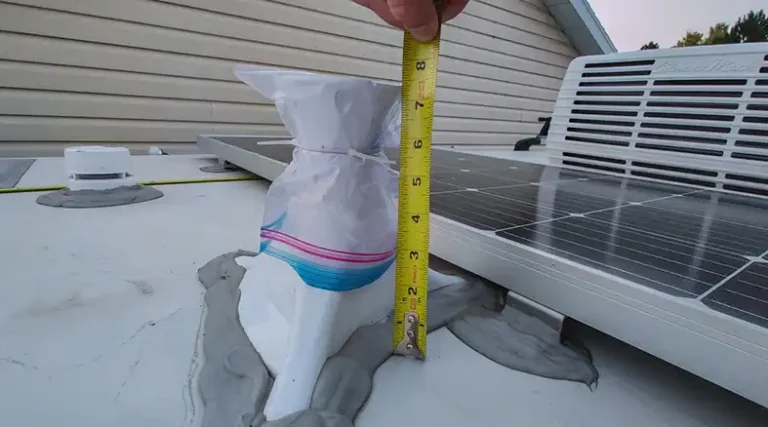How Much Do Solar Panels Cost for a 1,300 Square Foot House?
Installing solar panels on your 1,300-square-foot house is an excellent way to reduce your energy bills and carbon footprint. However, the upfront cost of purchasing and installing solar panels gives many homeowners pause. You may wonder how much exactly you can expect to pay to outfit a 1,300-square-foot house with solar power.
For a 1,300-square-foot house, the average cost of solar panel installation ranges from $16,000 to $24,000 depending on the system size, solar panel efficiency, and location. Many factors impact overall costs like roof type, electric usage, electricity rates, and available solar incentives and rebates.
Curious to learn more? Read on and explore the key factors that influence solar panel system costs for a home of this size. With a solid understanding of the costs and returns, you can decide if solar power is the right home upgrade for you this year. Let’s get started!
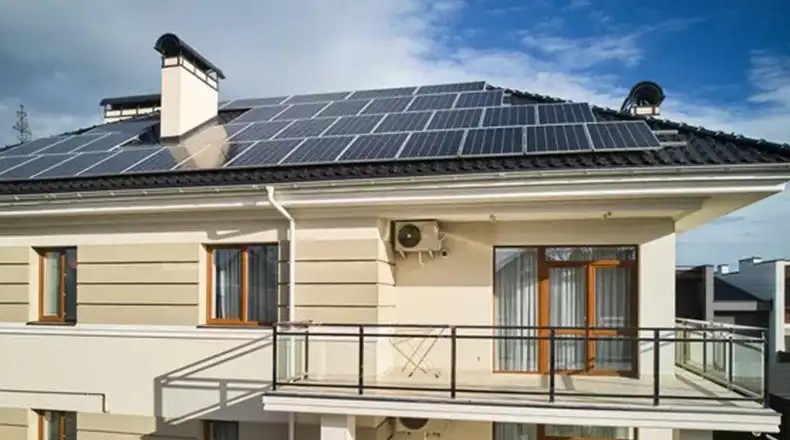
What Size Solar Panel System Does a 1,300 Square Foot House Need?
The size of the solar panel system you need depends on two main factors:
1. Your Home’s Electricity Usage
The first step in sizing your system is calculating your home’s annual electric usage, measured in kWh (kilowatt-hours). The average home uses about 10,812 kWh per year. But for a 1,300-square-foot house, a good rule of thumb is to estimate 12 kWh of electricity usage per square foot annually.
For a 1,300 sq ft home, the estimated annual usage is:
1,300 sq ft x 12 kWh per sq ft = 15,600 kWh
Your specific usage may be higher or lower based on your appliances, lighting, home age, number of residents, thermostat settings, and other factors influencing electric consumption. Checking past electric bills for your annual kWh usage provides the most accurate number.
2. Solar Panel System Size
Once you know your home’s annual electric usage, the next step is figuring out the solar panel system size needed to offset that usage. A system’s size is measured in kilowatts (kW).
As a benchmark, most homes require between a 5 kW and 8 kW system. To size your specific system, divide your annual kWh usage by the typical kWh output of a kW solar panel system in your region per year.
For a 1,300-square-foot home using 15,600 kWh per year in an area with an average of 1,300 kWh/year of solar production per kW installed, the system size calculation is:
15,600 kWh usage / 1,300 kWh per kW = 12 kW system size
So for a typical 1,300-square-foot home, plan for a solar panel system size of around 12 kW. Keep in mind this is just an estimate – a professional solar installer will assess your specific electricity usage and roof space and design a customized system to meet your household’s needs.
Cost Factor #1: Equipment and Installation
The upfront cost to purchase equipment and install a solar panel system makes up the bulk of your total solar investment. For a 12 kW system, typical equipment and installation costs fall between $16,000 and $24,000. Here are the key cost components:
- Solar Panels: For a 12 kW system, you’ll need around 30-40 solar panels rated between 330-400 watts each. Total solar panel costs range from $9,000 to $15,000 for mid-range efficiency panels. High efficiency and advanced panel technologies cost more. The sunnier your climate, the fewer panels you may need.
Solar Panel Installation Costs by Size:
| Solar Panel Size | Average Panels Needed | Average Solar Installation Costs |
| 2 kW | 6 – 8 | $6,015 |
| 3 kW | 10 – 12 | $9,225 |
| 4 kW | 16 – 21 | $12,035 |
| 5 kW | 15 – 20 | $14,893 |
| 6 kW | 19 – 24 | $18,500 |
| 7 kW | 20 – 25 | $21,008 |
| 8 kW | 22 – 28 | $24,552 |
| 10 kW | 26 – 33 | $26,300 |
| 12 kW | 30 – 35 | $31,360 |
| 15 kW | 40 – 50 | $37,950 |
| 20 kW | 55 – 60 | $50,600 |
| 25 kW | 68 – 76 | $63,250 |
- Inverters: Inverters convert the DC current from solar panels into AC current for household use. A system of this size requires an inverter in the 10-12 kW range. Inverter costs are around $3,000 to $4,000. Microinverters for each panel cost more.
- Racking and Mounting: Racking, rails, and mounts to securely fasten solar panels to your roof add $2,000 to $3,000 to costs. Rooftop systems require sturdier mounting hardware than ground arrays.
- Electrical Components: Wiring, circuit breakers, meters, and other electrical parts usually run $1,000 to $2,000. Underground wiring for ground mounts costs more.
- Labor: Professional installation accounts for $2,000 to $4,000 of your total costs. The labor for mounting panels and making electrical connections requires 2-3 days with a crew of 2-3 installers.
Total equipment and installation costs: $16,000 to $24,000
Roof type, panel technology, system size, location, and installer expertise significantly impact total installation costs. Getting multiple quotes is the best way to estimate costs for your specific home.
Cost Factor #2: Location and Solar Incentives
Where you live also affects total solar panel system costs. Incentives, rebates, and solar policies vary widely by state, utility, and municipality.
- Solar Tax Credits: The federal solar tax credit allows you to deduct 26% of solar installation costs from your federal taxes. Many states also offer additional tax credits ranging from 10%-35% of system costs. These credits help offset your final out-of-pocket expense.
- Solar Rebates and Incentives: Many states and utilities provide upfront rebates and performance-based incentives to reduce the cost of purchasing solar panels. These come in the form of state renewable energy funds, solar renewable energy credits (SRECs), and solar incentive programs through your local utility. Rebates can cover anywhere from 5%-60% of total solar panel costs.
- Net Metering Policies: Most states allow net metering, which credits you at the retail electric rate for excess power your panels send to the grid. This offset helps solar owners save significantly on electric bills. States with poor net metering policies reduce the returns from solar investments.
- Permitting and Grid Upgrade Fees: Some areas charge solar permitting fees up to $1,000 and may require costly grid upgrades. These can add to your overall costs, though permit fees are usually minimal.
When factoring in location, the average out-of-pocket cost after solar tax credits and incentives ranges from $8,000 to $14,000. Getting quotes specific to your region provides the most accurate cost estimate.
Cost Factor #3: Operations and Maintenance
While solar panels themselves are very low maintenance, inverter maintenance, system monitoring, and cleaning should be factored into long-term costs.
- Inverter maintenance/replacement: $1,000 – $3,000 every 10-15 years
- System monitoring: $100 – $500 per year
- Panel cleaning/maintenance: $150 – $300 per year
Operational and maintenance costs typically add $150 to $500 per year.
Return on Investment Timeframe
With incentives applied, solar systems for 1,300 square-foot homes typically pay for themselves in 6-9 years. The remaining 10-15-year lifetime of your panels provides free electricity from the sun. Cash purchase rather than financing greatly reduces the payback period.
Thousands in future energy savings, combined with added home value, make solar a smart long-term investment. Electricity rates continue rising 5-8% yearly, further improving solar ROI.
Additional Cost Considerations
A few additional items factor into the costs of going solar:
- Energy storage – Adding battery storage lets you use your solar energy at night. But it adds $5,000 or more to costs.
- Roof repairs – Any needed roof repairs and replacements should be made before solar installation. Budget $2,000-5,000 if your roof needs attention.
- HVAC upgrades – Cooling system upgrades may be needed for homes in hot climates. Budget $3,000-$5,000 if replacing your AC.
- Electrical upgrades – For older homes, electrical system, and wiring upgrades add $2,000-$3,000 if required.
- Removal and disposal costs – Removing and disposing of panels once their 25-year lifetime ends costs around $2,000-$4,000.
Bonus: Cost of Solar Panels by State
| State | Per Watt | 6 kW System | 10 kW System |
| Alabama | $2.02 – $2.85 | $12,120 – $17,100 | $20,200 – $28,500 |
| Alaska | $2.23 – $3.13 | $13,380 – $18,780 | $22,300 – $31,300 |
| Arizona | $1.88 – $2.35 | $11,286 – $14,118 | $18,810 – $23,530 |
| Arkansas | $2.42 – $2.74 | $14,520 – $16,440 | $24,200 – $27,400 |
| California | $1.82 – $2.29 | $10,926 – $13,758 | $18,210 – $22,930 |
| Colorado | $1.96 – $2.39 | $11,730 – $14,310 | $19,550 – $23,850 |
| Connecticut | $1.99 – $2.49 | $11,994 – $14,994 | $19,990 – $24,990 |
| Washington D.C. | $1.75 – $2.57 | $10,518 – $15,450 | $17,530 – $25,750 |
| Delaware | $1.95 – $2.13 | $11,742 – $12,810 | $19,570 – $21,350 |
| Florida | $1.48 – $2.09 | $8,880 – $12,552 | $14,800 – $20,920 |
| Georgia | $1.91 – $2.14 | $11,448 – $12,852 | $19,080 – $21,420 |
| Idaho | $2.03 – $2.22 | $12,162 – $13,314 | $20,270 – $22,190 |
| Illinois | $2.01 – $2.52 | $12,078 – $15,162 | $20,130 – $25,270 |
| Indiana | $2.07 – $2.49 | $12,444 – $14,940 | $20,740 – $24,900 |
| Iowa | $2.20 – $2.38 | $13,200 – $14,268 | $22,000 – $23,780 |
| Kansas | $1.49 – $2.06 | $8,940 – $12,360 | $14,900 – $20,600 |
| Kentucky | $2.35 – $3.04 | $14,100 – $18,240 | $23,500 – $30,400 |
| Louisiana | $1.77 – $2.33 | $10,644 – $13,980 | $17,740 – $23,300 |
| Maine | $1.85 – $2.35 | $11,100 – $14,100 | $18,500 – $23,500 |
| Maryland | $1.67 – $2.16 | $10,026 – $12,942 | $16,710 – $21,570 |
| Massachusetts | $1.94 – $2.37 | $11,628 – $14,376 | $19,380 – $23,960 |
| Michigan | $1.99 – $2.50 | $11,976 – $14,976 | $19,960 – $24,960 |
| Minnesota | $2.01 – $2.37 | $12,000 – $14,244 | $20,000 – $23,740 |
| Mississippi | $1.98 – $2.75 | $11,880 – $16,500 | $19,800 – $27,500 |
| Missouri | $1.71 – $2.42 | $10,260 – $14,520 | $17,100 – $24,200 |
| Montana | $1.86 – $2.34 | $11,148 – $14,064 | $18,580 – $23,440 |
| Nebraska | $1.74 – $2.88 | $10,440 – $17,280 | $17,400 – $28,800 |
| Nevada | $1.92 – $2.13 | $11,526 – $12,762 | $19,210 – $21,270 |
| New Hampshire | $1.97 – $2.55 | $11,796 – $15,300 | $19,660 – $25,500 |
| New Jersey | $1.76 – $2.35 | $10,530 – $14,118 | $17,550 – $23,530 |
| New Mexico | $2.02 – $2.73 | $12,102 – $16,362 | $20,170 – $27,270 |
| New York | $1.80 – $2.64 | $10,824 – $15,840 | $18,040 – $26,400 |
| North Carolina | $1.73 – $2.27 | $10,380 – $13,632 | $17,300 – $22,720 |
| North Dakota | $1.39 – $1.97 | $8,340 – $11,820 | $13,900 – $19,700 |
| Ohio | $1.79 – $2.29 | $10,740 – $13,740 | $17,900 – $22,900 |
| Oklahoma | $1.88 – $3.34 | $11,280 – $20,040 | $18,800 – $33,400 |
| Oregon | $1.63 – $2.20 | $9,804 – $13,224 | $16,340 – $22,040 |
| Pennsylvania | $1.80 – $2.60 | $10,782 – $15,630 | $17,970 – $26,050 |
| Rhode Island | $2.08 – $2.44 | $12,492 – $14,652 | $20,820 – $24,420 |
| South Carolina | $1.92 – $2.38 | $11,544 – $14,292 | $19,240 – $23,820 |
| South Dakota | $1.88 – $2.93 | $11,280 – $17,580 | $18,800 – $29,300 |
| Tennessee | $1.30 – $1.97 | $7,800 – $11,820 | $7,800 – $11,820 |
| Texas | $1.75 – $2.15 | $10,494 – $12,906 | $17,490 – $21,510 |
| Utah | $1.83 – $2.41 | $10,950 – $14,454 | $18,250 – $24,090 |
| Vermont | $1.79 – $2.58 | $10,716 – $15,480 | $17,860 – $25,800 |
| Virginia | $1.69 – $2.11 | $10,134 – $12,630 | $16,890 – $21,050 |
| Washington | $1.71 – $2.19 | $10,278 – $13,110 | $17,130 – $21,850 |
| West Virginia | $2.17 – $3.38 | $13,020 – $20,280 | $21,700 – $33,800 |
| Wisconson | $2.11 – $2.42 | $12,666 – $14,490 | $21,110 – $24,150 |
| Wyoming | $2.39 – $2.78 | $14,340 – $16,680 | $23,900 – $27,800 |
Final Words
Carefully comparing quotes and calculating incentives for your particular home and location provides the most accurate solar price estimate. An ideal solar setup provides 100% of your household’s electricity while minimizing upfront costs. With a better understanding of the key factors impacting costs, you can decide if solar power is the right choice for your 1,300-square-foot house this year. We hope this overview gives you clarity on budgeting for a solar panel system. Please leave a comment below if you have any additional questions. And thank you for taking the time to learn more about solar costs for a home your size. Wishing you the best in your journey towards energy independence!
People Also Asked
Should I Buy Or Lease Solar Panels?
Buying your system outright provides the highest long-term returns. However solar leases or PPAs can provide zero down financing for those who lack capital. You typically save more over time by owning the system.
How Much Space Do 12 Kw Of Solar Panels Need?
12 kW of solar panels need about 400-600 sq ft of roof space. Panels are usually 6 ft long by 3 ft wide. Allowing for space between panels, 12 panels need around 500 sq ft of sunny, south-facing roof space.
Can I Install Solar Myself?
While possible for the DIY handyperson, solar requires specialized skills for successful and safe wiring and mounting. Hiring a qualified installer is highly recommended. But you can save by purchasing panels, inverters, and other system components yourself.
How Much Will Solar Panels Increase My Home Value?
Installing solar panels typically increases home value by $15,000 to $30,000. Solar energy adds long-term home worth as energy costs rise. Appraisers account for energy bill savings in increased home valuation.

